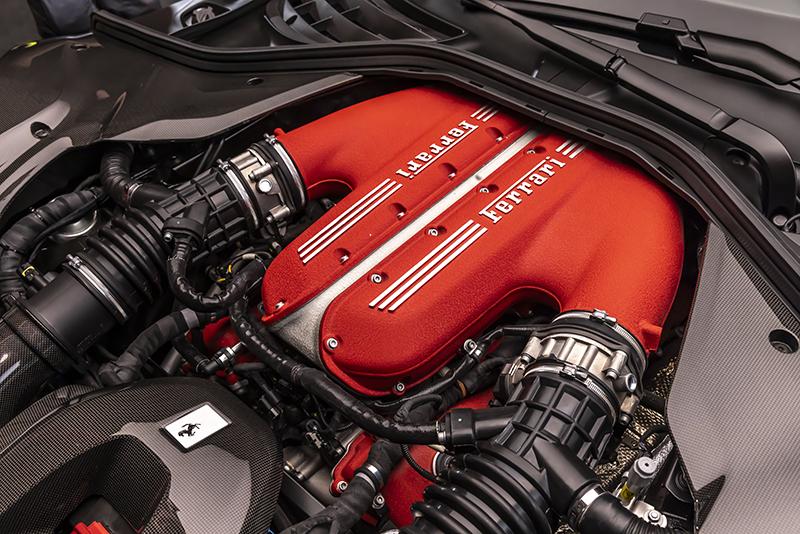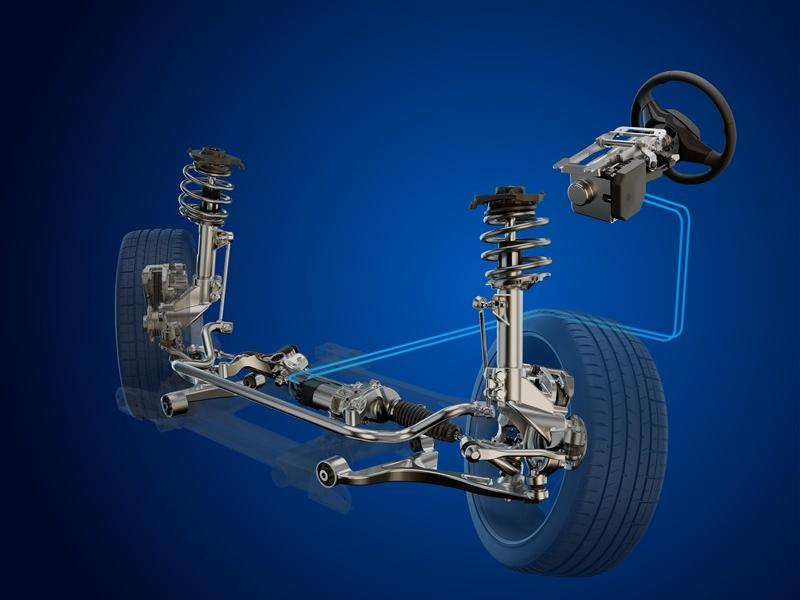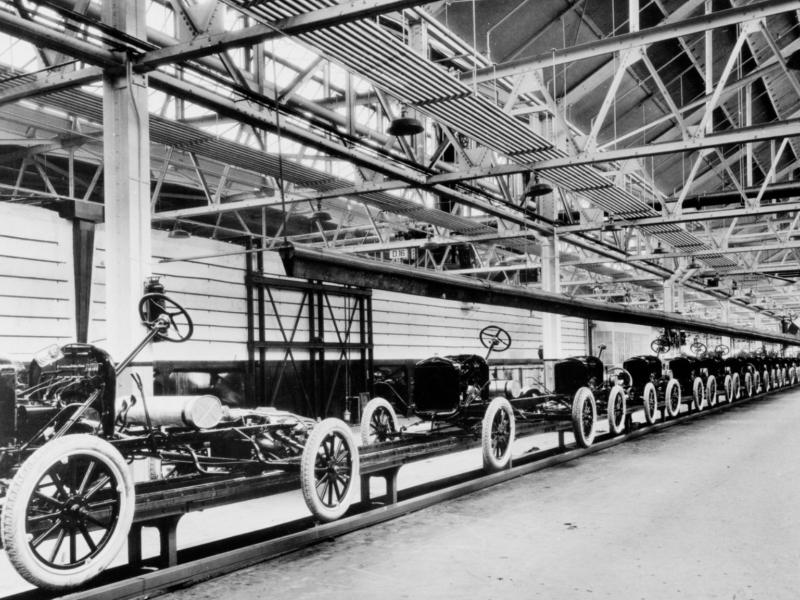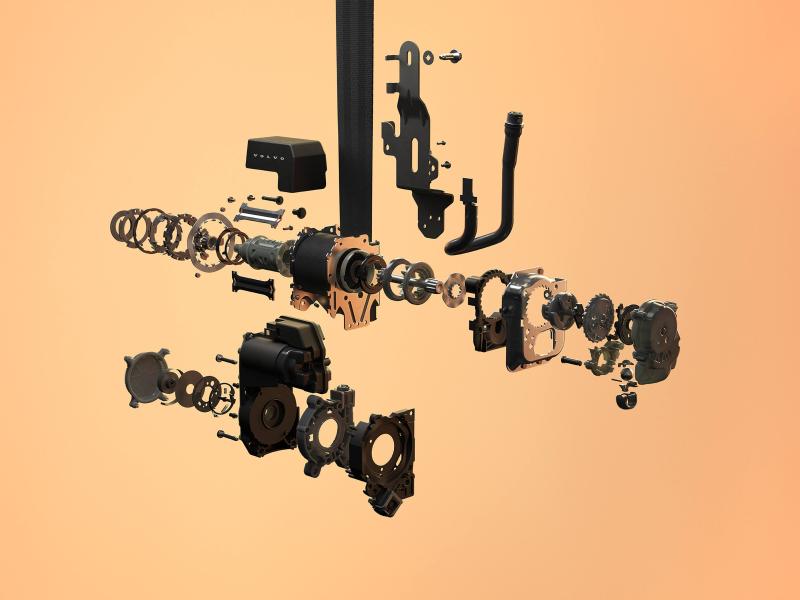There has been a single leitmotif that has been thrilling Prancing Horse enthusiasts since 1947: the naturally-aspirated, mid-front-mounted V12, the very first Ferrari engine to roar its way through the factory gates in Maranello. The Ferrari 12Cilindri is the natural evolution of the company’s uncompromising powertrain philosophy, which over the decades has continued to develop without ever straying from its original DNA and the marque’s core values.
The Ferrari 12Cilindri is inspired by the legendary Grand Tourers of the 1950s and ‘60s, embodying the front-mounted Ferrari V12 two-seater mission.
Powertrain
The F140HD engine equipping the Ferrari 12Cilindri is the new version of the iconic naturally-aspirated Ferrari V12, the purest expression of Ferrari’s soul: its peerless performance, powerful soundtrack and exclusivity make it the worthy heir to the legendary berlinetta sports cars. The engine can unleash up 610 kW while its max revs have been increased to 9500 rpm by adopting challenging and innovative solutions.
The engine features modified components and software, ensuring it tops its category in terms of performance. To allow the V12 to rev so high, the engineers worked to reduce the weight and inertia of the engine’s components, adopting titanium con rods, which guarantee a saving of 40 per cent in rotating mass compared to steel with the same mechanical resistance. A different aluminium alloy was used for the pistons, making them lighter than on previous applications. Further weight reduction was gained by the adoption of a rebalanced crankshaft which is 3 per cent lighter.
The valvetrain with sliding finger followers is derived from Ferrari’s unparalleled experience in Formula 1 and was developed specifically for the V12 with the aim of reducing mass and availing of more high-performance valve profiles. The sliding finger follower, which is steel with a Diamond-Like-Carbon (DLC) coating, transmits the action of the cam to the valve using a hydraulic tappet as the pivot for its movement. The use of DLC reduces the coefficient of friction at critical points, significantly improving the mechanical efficiency of the engine.
Most of the modifications focused on optimising torque delivery in all operating conditions.
The manifold and the plenum layout is now very compact: shortening the length of the tracts and optimising the cam profiles allows power to be unleashed at high revs, while the torque curve is optimised at all engine speeds by a system of variable geometry inlet tracts which enables the length of the intake tract to be continuously varied to maximise the dynamic charge in the cylinder.
For the very first time on a naturally-aspirated engine, an innovative software strategy was developed that can modify the maximum torque available as a function of the gear selected.
A crescendo of never-ending acceleration and power delivery has been a signature of all Ferrari V12s. Now innovative Aspirated Torque Shaping (ATS) has allowed Maranello engineers to sculpt the torque curve in third and fourth gears using sophisticated electronic control that improves perception of the torque without impinging on acceleration.
Optimising the engine’s mechanical efficiency and that of the lubrication circuit is critical to delivering blistering performance and low fuel consumption. The calibration of the variable displacement oil pump allows the oil to circulate throughout the entire engine and then be recovered along with the vapours from the sump. A solenoid valve, controlled by the engine ECU in a closed loop, is used to control the pump’s displacement in terms of engine revs and pressure, delivering only the amount of oil required and thereby simultaneously saving a significant amount of energy. The new configuration of the oil tank and pump’s hydraulic circuit reduces losses to a minimum and optimises functionality in all operating conditions.
The gasoline direct injection system (GDI at 350 bar) comprises two petrol pumps and four rails with pressure sensors that provide feedback to the pressure control system. The electronic injectors can also control up to three injections per engine cycle. The ignition system is constantly monitored by the engine control unit which has a single and a multi-spark function.
The new exhaust system, developed to allow the car to comply with the latest emissions requirements (EU6E, China 6b and Bin 50), introduces a ceramic catalytic converter coupled with a particulate filter.
Sound is pivotal to marrying the comfort, luxury and exhilarating driving emotions typical of a Ferrari V12: to this end, every element of the intake and exhaust lines were optimised. Equal-length exhaust tracts, the six-in-one manifold for every cylinder bank and the innovative design of the central sections has resulted in Ferrari’s typical V12 howl that comprises all of the noble combustion orders.
Performance under acceleration through the gears has been significantly improved and the introduction of the 8th gear improves range in motorway driving. The eight-speed DCT thus both improves efficiency and is more engaging in all gears.
Cooling layout
The heat dissipation requirements of the engine and ancillaries demanded a redesign of the car’s entire cooling system which resulted in front underbody evacuation being optimised, with no fewer than seven openings in the front bumper. In particular, the space between the longitudinal elements of the chassis houses the engine coolant radiator and aircon circuit condenser, which are fed by the central opening, while the oil radiator has been split into two separate elements, lying ahead of the front wheels. The two side air intakes are divided in two: the outer part is designed to cool the engine oil radiator while the inner one cools the brakes.
A generous brake cooling duct is fed by two openings, one between the radiator intakes and the other on the lower part of the front splitter. The entire system is integral to the oil radiator intake to optimise the routing of the front brake intakes. The side intakes are framed by an L-shaped element designed to maximise the amount of air entering the opening whilst simultaneously correctly channelling the flow along the car’s flanks.
The air in the engine bay exits through two vents on the bonnet which reduce overpressure, improving cooling efficiency. Thanks to the latter, there are fewer openings on the underbody, thereby maximising efficient downforce generation. On the wing behind the front wheels there is also a vent for the air from the wheelarch which minimises overpressure on the underbody caused by the cooling duct for the brakes and front diffusers.
7-year maintenance
Ferrari’s unparalleled quality standards and increasing focus on client service underpin the extended seven-year maintenance programme offered with Ferrari 12Cilindri. Available across the entire Ferrari range, the programme covers all regular maintenance for the first seven years of the car’s life. This scheduled maintenance is an exclusive service that allows clients the certainty that their car is being kept at peak performance and safety over the years.
Regular maintenance (at intervals of either 20,000 km or once a year with no mileage restrictions), original spares and meticulous checks by staff trained directly at the Ferrari Training Centre in Maranello using the most modern diagnostic tools are just some of the advantages of the Genuine Maintenance Programme. The service is available on all markets worldwide and from all Dealerships in the Official Dealership network.






